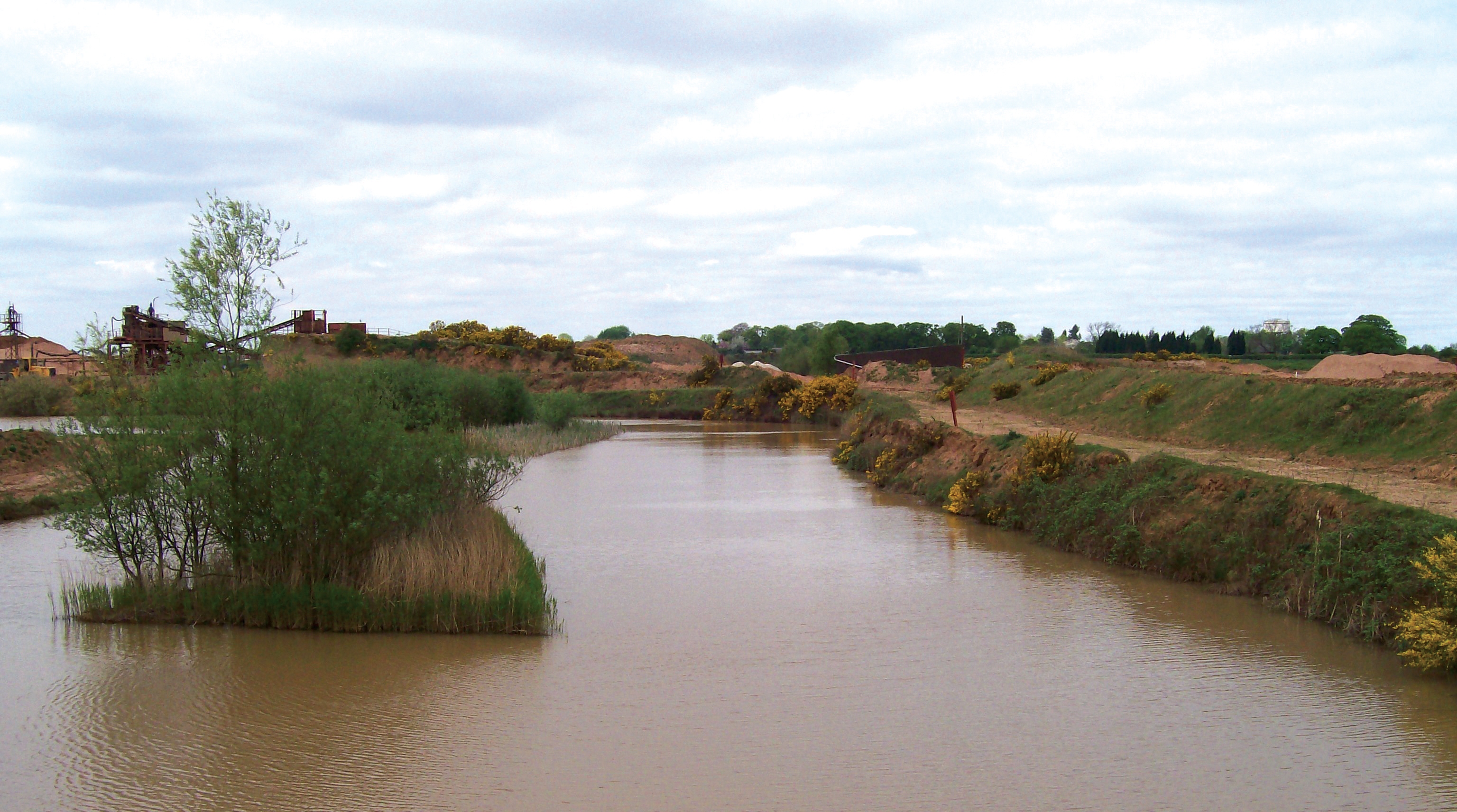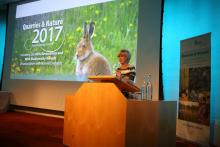
Few would argue against the benefits of restoring excavated quarry sites in such a way that it enhances nature conservation. However, the UK Environment Agency took some convincing that a request to import over two million tonnes of infill material was not an excuse to dump waste and effectively use old quarries as landfill sites.
Engineering and environmental consultancy Wardell Armstrong used its expertise in waste legislation, planning and permitting to secure bespoke environmental permits for the restoration of three large quarry sites. Dunsville and Stainton are limestone quarries in South Yorkshire, England, and Maesmynan is a sand and gravel quarry in County Clwyd, North Wales. All three are owned and operated by the
As part of the company’s commitment to achieving a high standard of restoration, nature conservation and beneficial after-use for local communities, Marshalls set out plans to use clean soils, sub-soils and other suitable wastes as infill material after excavation. Some of this would involve the reuse of site-won quarry overburden materials and soils.
But mineral extraction at the sites over a number of years meant a deficit of some 2.2 million tonnes, the volume Marshalls needed to complete its ambitious restoration plans.
The three sites had previously operated under a lawful exemption from environmental permitting relating to land reclamation or improvement. However, a change in the law with the introduction of the Environmental Permitting (England and Wales) Regulations 2010 meant this was no longer possible because of the high volume of restoration material required.
So the company had to apply for bespoke environmental permits to authorise waste import and deposit, and it called on Wardell Armstrong for expert help.
“Although the
“There are also strict minimum distance requirements in relation to statutory nature sites, water courses and boreholes. Because of the size and location of the Marshalls quarries we had to prepare much more detailed applications for bespoke permits, knowing that they would be scrutinised far more closely.”
The key task was to satisfy the Environment Agency that this was not simply a landfill operation but one of genuine waste recovery and restoration, with the aim of returning land to a mixture of agricultural, open space and nature conservation use.
A high level of justification was needed including detailed void and infill volumes.
Imported wastes would be subject to strict characterisation and testing to make sure there would be no risks to the local communities or the environment. Full biodiversity action plans were also needed for each site.
Wardell Armstrong prepared a detailed waste recovery plan, amenity risk assessment and groundwater risk assessment for each application as well as drawings to show restoration contours and cross-sections of excavation and infill levels. The submissions also included the proposed end use of each site, the chemical and engineering properties of the waste, justification that only the minimum amount necessary would be used, demonstration that alternative non-waste material would be used wherever possible, justification of waste depth, quality assurance, and the benefits involved.
All this information was submitted to the Environment Agency as part of the application process. It was far from quick. Many questions had to be answered, and many challenges resolved. But bespoke environmental permits were granted for all three sites, and Marshalls’ waste import and restoration plans got the green light.
Critical to success
The additional waste will consist mainly of clean soils and sub-soils, but also inert bricks, tiles, concrete and ceramics, sourced from local contractors undertaking civil engineering works. In all cases it will be non-polluting and covered by the environmental permits.
“Our detailed knowledge of waste legislation was critical to success, including the legal intricacies of what constitutes recovery as opposed to disposal,” says Barnes.
The restoration scheme at Maesmynan Quarry will enhance nature conservation with the planting of a mixture of native woodland and copse, and areas of grassland and agriculture. A lake, with exposed sandbanks, will be created with an island feature and planted with grassland, willow-carr and reed beds to produce a wetland habitat to encourage wildlife and enhance biodiversity.
Hedgerows will be planted around parts of the site perimeter, and when restoration is complete the final appearance will be an attractive natural rolling landscape with wooded slopes gradually merging with grassland and a large area of wetland in keeping with the surrounding landscape.
Planning permission at the site foresees completion and restoration by 2015, although this may be extended.
Sheep bred to graze quarries
In Germany, a team has been rearing a tough breed of sheep to graze in quarries at Geseke.
For the last 120 years lime and cement have been produced in the town in the eastern part of Northrhine-Westfalia, western Germany.
The original mid-sized companies have been replaced by international concerns including
Among national winners was the Hellweg-Stonesheep Project which started in 2009.
The project team points out that a recultivated quarry needs to be maintained, for example bushes and trees must be cut regularly. The use of agricultural machines often has the side effect that some of the protected species are destroyed during the care procedure.
“A proven possibility is the use of sheep in restoration areas. They hold down the growth of unwished-for crops and ground cover and ensure the deployment of the valuable species,” says the team.
“By trampling the ground they additionally tighten the ground and can reach even inaccessible areas.
The typical sheep races are only partially appropriate for this kind of environment: the conditions are difficult for the sheep to live in.” The target of the project is to raise a new, specialised breed of sheep for the restoration of quarry areas, and it should be “more persistent, easy to look after and more undemanding than known races.”
The aim of the Hellweg-Stonesheep Project is the breeding of sheep that can adapt themselves to extreme situations: robust sheep for taking care of calcareous low-nutrient meadow complexes in abandoned and active quarries of the region south of Geseke.
Hellweg has its origin in the Middle Ages when it was an important an extensive trade route linking eastern and western Europe.
“The Hellweg Stonesheep Project, aimed at breeding a land-nurturing breed is a successful approach. The development of a large herd, coupled with consistent area management allows for continuing improvement of area maintenance and a reduction in maintenance costs,” says the team’s report.
Three years after the start of the project, detailed interim results have been obtained, and these indicate the project is “on a good way and is planned to be extended.”An interesting aspect of Maesmynan Quarry is that it is only 160m from Caerwys Tufa SSSI (site of special scientific interest), an important location for geological research.
Exposed tufa faces, dating from the end of the last Ice Age, are a useful resource for studying changes to the environment over the last 15,000 years thanks to the exposure of buried soils, leaf beds and animal fossils in the strata.
Stainton Quarry will be fully worked and restored within 18 years. It will see the planting of a mixture of native woodland and copse with areas of grassland and agriculture to encourage wildlife.
The biodiversity action plan for the site includes the planting of broadleaf woodland and hedgerows to enhance the habitats for bats, birds, invertebrates and reptiles. Some of the quarry head walls are left in-situ as nesting habitats for birds.
Native woodland, heathland and areas of grassland and pasture will be planted at Dunsville Quarry, which is due for completion and restoration by 2021.
An existing lake will be retained, and other small shallow water bodies created.
Both Stainton and Dunsville are located in areas of calcareous grassland with limestone-rich soils that support a wide variety of species.
As at Maesmynan, these areas will be planted with wet grassland, willow-carr and reed beds.
Valid planning permissions are in place for all three sites, and the restoration concepts have been approved by the relevant planning authorities. The proposed vegetation types and habitat provision are in line with regional and local landscape characteristics, reflecting national vegetation classification. With the bespoke environmental permits successfully secured, Marshalls is now perfectly placed to restore all three quarries to the high standard of nature conservation and after-use they had always aimed for.
“Marshalls is very grateful for the professional support given by Wardell Armstrong,” says Ian Pearson, group mineral manager for Marshalls.
“The new permits will now enable us to achieve improved restoration schemes at the quarries concerned, while making sensible use of inert fill in need of disposal. It could be described as a win–win situation.”







